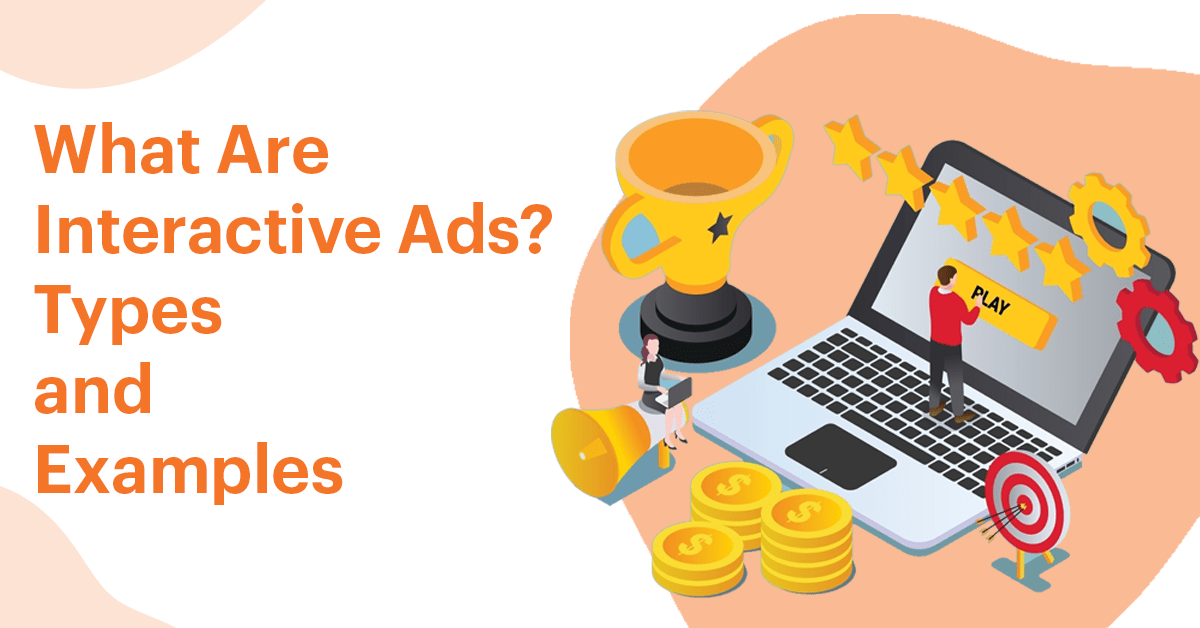Engaging ads are much better because they attract the target audience to become active users for a certain output. These ads leave a good impression in the minds of the audience and make them relate to certain brands. Interactive ads are most evolving ads nowadays.
These ads make the messaging more entertaining and meaningful for the users through their interaction. It also gives brands insights into what consumers like and how they behave. This leads to better brand recall, more user involvement, and stronger advertising in the digital world.
What Are Interactive Ads?
Interactive Ads, often referred to as engagement ads or rich media, enable users to interact with the content in a dynamic and participatory way. Unlike regular ads posted on web pages where users just pass by, these ads are interactive, hence offering a better experience. Some incorporate different forms of technology and interaction features to gain people’s attention and engage them actively, providing viewers with better than plain images or texts.
In a survey it’s found that an interactive content strategy assists marketers in differentiating themselves from their rivals—88% of them claim that this tool helps them reach the goal, and it increases customer engagement by 49% more time with an interactive component.
Types of Interactive Ads with Examples
Interactive ads can enrich your marketing approach and are highly diverse. These commercial breaks are informative and create a unique environment in which the viewer participates in the advert and increases the appeal.
Five Interactive Ad Formats are
Playable Ads
Interactive ads that let users try a game or app before downloading it. Engages users and boosts download rates.
Types of Playable Ads
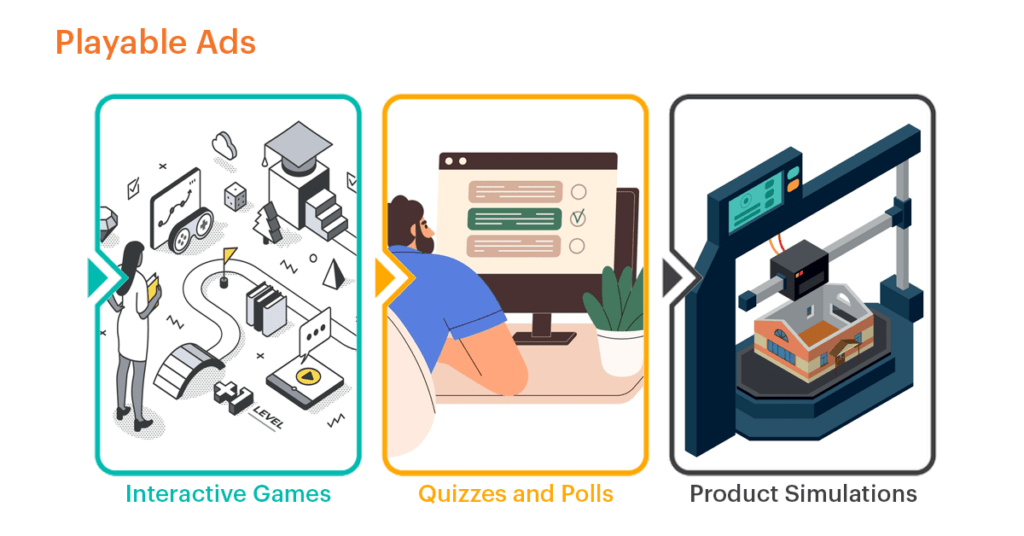
Interactive Games: People get to solve a puzzle or a mini-game on a particular product or service. A car company will have a car racing game.
Quizzes and Polls: Many brands design quizzes or polls based on their products and services to keep users hooked on their pages. For instance, a makeup brand could have a quiz on the best makeup type for a particular user.
Product Simulations: They allow users to test a product in the digital environment, for instance, by placing a piece of furniture in their living room with the help of AR.
Augmented Reality (AR) Ads
Ads that blend digital elements with the real world through a smartphone camera. Offers an immersive experience.
Types of Augmented Reality Ads
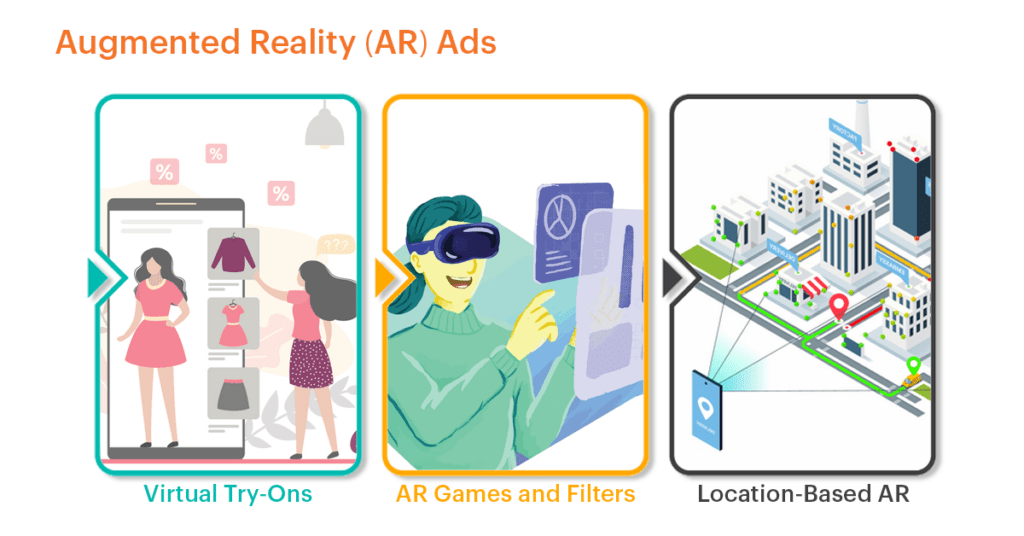
Virtual Try-Ons: Fashion and beauty brands offer virtual try-ons where users can virtually apply clothes or makeup to see how such products will look on them.
AR Games and Filters: AR technology is used in interactive games or as filters. For instance, a food brand might transform users into chefs.
Location-Based AR: Clients can receive location-based information or offers via AR, such as a restaurant displaying today’s specials when a user points a cell phone at it.
360-Degree Videos
Videos that allow users to explore in all directions. Enhances user engagement with a more interactive view.
Types of 360-Degree Videos Ads
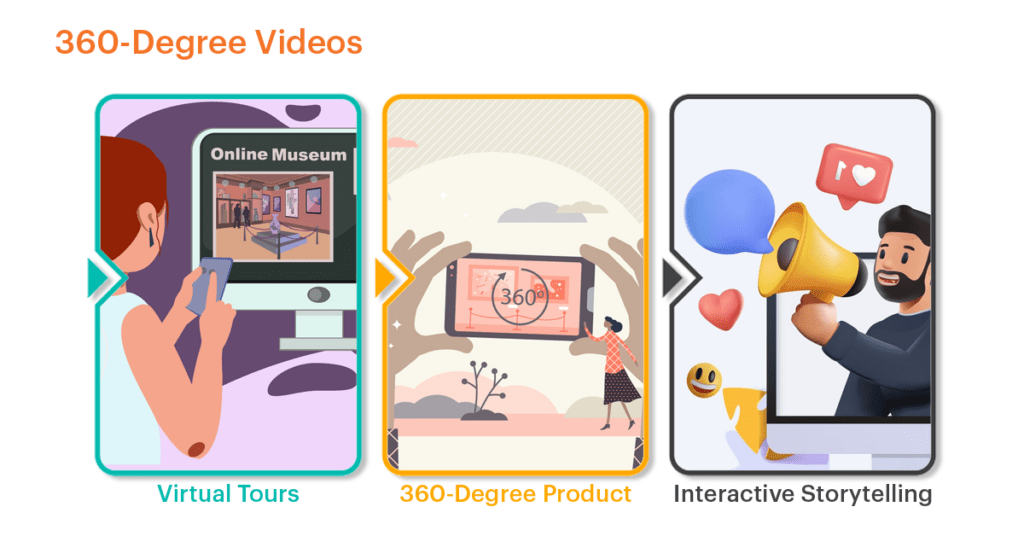
Virtual Tours: Businessmen provide online tours of their facilities or products. Real estate might boast virtual tours of some properties.
360-Degree Product Displays: Retailers display products in different views to help users get a better view before buying.
Interactive Storytelling: It is a virtual world where brands share their stories in 360-degree videos, which allows them to explore different aspects.
Chatbots and Conversational Ads
Automated chat interfaces that interact with users in real-time. Improves customer service and engagement.
Types of Chatbots and Conversational Ads

Interactive Conversations: Brands are currently incorporating chatbots into advertisements to talk to customers, inform them, and elicit questions.
Interactive Product Recommendations: Some of the P’s of marketing, especially for e-commerce companies, involve using chatbots to assist icons in finding the products they want among the many available.
Quizzes and Challenges: Quizzes or challenges are another example of how advertisement content can be designed to include a simple chatbot that entertains users and indirectly advertises products.
Interactive Social Media Ads
Interactive social media ads are engaging advertisements designed to capture user attention and encourage participation. These ads often include elements such as polls, quizzes, videos, and augmented reality experiences. By promoting active user involvement, interactive ads can significantly boost brand awareness, engagement rates, and conversion rates, making them a powerful tool for digital marketers.
Types of Interactive Social Media Ads

Polls and Surveys: Social media provides features that allow brands to create polls and surveys in ad posts to get feedback.
User-Generated Content Campaigns: These campaigns engage users in formulating material about a brand, which can help transform an advertisement into a communication initiative.
Live Q&A Sessions: Some brands incorporate a section where users can pose questions, usually within the social media ad sections of the brands’ pages.
Rich Media Ads
Rich media ads are dynamic, multimedia advertisements that incorporate various elements like video, audio, animation, and interactive features. These ads are more engaging and eye-catching compared to standard display ads, allowing for a more immersive user experience. Rich media ads enhance brand storytelling, increase user interaction, and can lead to higher click-through rates and conversions, making them highly effective for advertisers looking to maximize their online presence.
Types of Interactive Social Media Ads
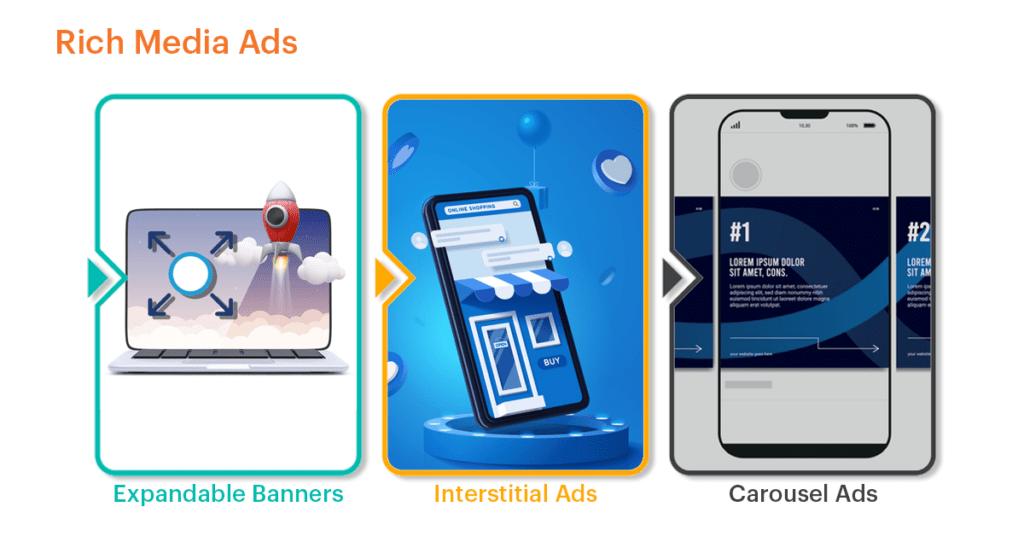
Expandable Banners: These ads are large enough to pop out when you click or mouse over them, providing more content.
Interstitial Ads: Banners are still displayed at logical breaks, such as between levels in a game, and are frequently interactive, comprising videos or forms.
Carousel Ads: Image and video carousels, where there is one ad with many images or videos that the users can swipe through, say, a fashion brand with several outfits.
These examples demonstrate how interactive advertisements capture user attention and deliver a more engaging brand experience. Understanding these formats can help you choose the right one to connect with your audience, make your brand memorable, and drive more conversions.
Conclusion
Interactive Ads are powerful tools for engaging your audience and boosting your brand. They come in many forms, from quizzes to 360-degree videos. Keep in mind that a successful interactive advertising campaign requires meticulous planning and creativity. So, start planning your next interactive ad and watch your engagement soar.

